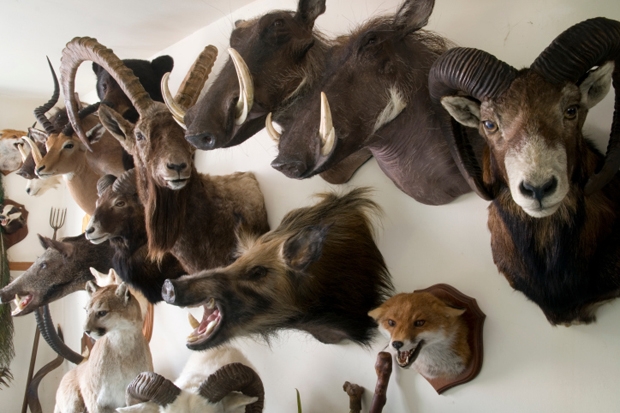As Dear Mary so wittily demonstrates, our need for advice is perennial. But fashions change. Mary would probably take issue with The Handbook of the Toilette (1839), which advises that one should take a weekly bath whether one needs to or not, and also with the recommendation of Cassell’s Home Encyclopedia (1934) that ‘bloater cream’ makes excellent cocktail canapés. She would surely concur, though, with an observation from All About Etiquette (1879) that ‘a social party is not intended as a school for reform, or a pulpit to denounce sin’.
To compile How to Skin a Lion Claire Cock-Starkey has consulted the British Library. She promises ‘medieval manuscripts’, but her selection is mostly from Victorian sources. She has resisted the temptation to write a history of advice and self-help, which would have made for a much longer and more interesting work. Instead she has produced an intermittently entertaining, relentlessly random and occasionally useful toilet book.
Much of it concerns the killing of animals. Apparently a hippopotamus is best shot up the nostril. I had to skip the passage from Rowland Ward’s Sportsman’s Handbook (1923) about ‘How to skin a lion’, as I was reading in the company of my cat, but I was charmed by a story about some Boers on a lion hunt from R. Gordon Cumming’s A Hunter’s Life in South Africa (1850). When one of them was knocked to the ground by a lion, the rest of the party galloped away and fired at the beast from a distance, missing their target and bagging their comrade.
Edmund C.P. Hull’s The European in India (1874) is extensively quoted. He is sound on the matter of seasickness — ‘Champagne, Moselle, or sparkling hock, are often found to have an excellent effect in settling the stomach’ — but less so on how to rid a house of fleas. One method is to cover the floor with straw and set it alight, while another is to drive a herd of cattle through the building. Hull concedes that the first method risks burning down the house, and the second demolishing it.
Some advice involves tobacco, as today it would certainly not. In On Safari (1908), Abel Chapman recommends tobacco smoke for testing wind direction while stalking: ‘I have had a lighted pipe in my mouth at the time of firing at more than half the game I have killed.’ While A Shilling’sWorth of Practical Receipts (1856) informs us how best to restore a drowned person: ‘Tobacco smoke is to be thrown gently up the fundament, with a proper instrument.’
I am glad to have acquired a rough idea of how to put back a jaw dislocated by yawning or laughter, using the thumbs and a fork-handle, and rather wish I hadn’t learnt how to dislodge a leech from someone’s throat with a large swan’s quill.
My advice to the author and her publisher is doubtless redundant, but I offer it anyway: wait for Christmas, and republish in paperback at half the price.
Available from the Spectator Bookshop, £9 Tel: 08430 600033






Comments